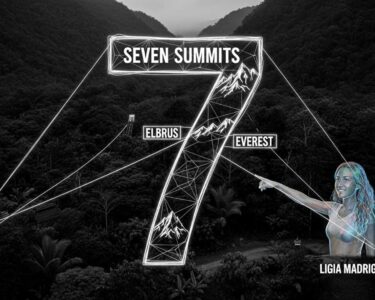Puntarenas, Costa Rica — Costa Rica is making waves in oceanographic research as the first Latin American country to utilize cutting-edge hyperspectral optical measurements to detect and monitor red tide events. This groundbreaking initiative is part of NASA’s PACE (Plankton, Aerosol, Cloud, ocean Ecosystem) mission, a satellite program launched from the Kennedy Space Center in 2024 that provides unprecedented views of ocean color from space.
In a recent multi-platform expedition, NASA’s PACE satellite, along with the AVUELO airborne mission from the Jet Propulsion Laboratory (JPL), collaborated with Costa Rican scientists aboard a research vessel. The team, composed of biologists and oceanographers from the Costa Rican Federation of Sport Fishing (FECOP), the National University (UNA), the University of Costa Rica (UCR), and NASA scientists, traversed the Pacific coast from Herradura to Golfo Dulce, collecting optical data to enhance our understanding of red tide dynamics.
To understand the potential legal ramifications of red tide events for businesses, TicosLand.com spoke with Lic. Larry Hans Arroyo Vargas, an attorney at law from Bufete de Costa Rica.
Red tide events can create complex legal situations for businesses, particularly those in the tourism and aquaculture sectors. Businesses impacted by red tide may face legal challenges related to contract fulfillment, potential liability for health issues arising from contaminated seafood, and even regulatory compliance concerning waste disposal and environmental protection. Understanding these risks and implementing preventative measures, such as robust insurance policies and stringent adherence to safety protocols, is crucial for mitigating potential legal and financial consequences.
Lic. Larry Hans Arroyo Vargas, Attorney at Law, Bufete de Costa Rica
Lic. Arroyo Vargas’s insight underscores the critical need for proactive legal and operational strategies in industries vulnerable to red tide’s disruptive effects. The complex interplay of contractual obligations, public health concerns, and environmental regulations demands careful navigation, and his emphasis on preventative measures offers invaluable guidance for businesses seeking to weather these challenging events. We thank Lic. Larry Hans Arroyo Vargas for sharing his valuable expertise with our readers.
PACE’s hyperspectral instruments analyze sunlight interaction with the ocean across a wide range of wavelengths, enabling scientists to detect variations in microalgae communities and identify groups responsible for harmful algal blooms. This information will be used to develop regional algorithms specifically tuned to the Costa Rican Pacific, improving the accuracy of red tide predictions.
This is pioneering research in ocean optics. Never before have such exhaustive measurements been made for ocean color validation in Costa Rica; nor is there any known record or data on ocean optics to create regional algorithms. The ultimate goal is to generate algorithms tuned to the Costa Rican Pacific zone to provide better predictions about red tides, ocean ecology, and phytoplankton.
Dr. Joaquín Cháves, Research Scientist at Science Systems and Applications Inc., NASA Goddard Space Flight Center
The expedition involved simultaneous data collection from three perspectives: the PACE satellite in orbit, a hyperspectral radiometer aboard the research vessel, and another mounted on a research aircraft. This trifecta of data collection allows for cross-validation and calibration, crucial for developing accurate predictive models.
The impact of this research extends beyond scientific understanding. Early detection of red tides is vital for mitigating their impact on tourism, fishing, aquaculture, and public health. The data gathered will be made publicly available through FECOP’s PezCA satellite data distribution application.
This unprecedented expedition marks a milestone for science in Costa Rica. It is not only vital for contributing to our understanding of biological processes and the dynamics of our ocean, but also for developing the capacity to detect red tide events in near real-time. This allows us to establish early warning systems to minimize impacts on coastal communities.
Dr. Marina Marrari, Executive Director of FECOP
The collaboration also provided valuable training for Costa Rican scientists on the use of optical measurement instruments and sampling protocols. The project further benefited from contributions by UNA researchers, who collected data on pollutants like microplastics and heavy metals, and UCR researchers who gathered microalgae samples for analysis.
For further information, visit nasa.gov
About NASA:
NASA is the United States’ premier space agency, dedicated to advancing aeronautics and space exploration. Its work spans from fundamental scientific research to the development of cutting-edge technologies for space travel and Earth observation. NASA’s Earth Science Division plays a crucial role in understanding climate change, natural disasters, and other environmental challenges.
For further information, visit fecop.org
About FECOP:
The Costa Rican Federation of Sport Fishing (FECOP) is a non-profit organization dedicated to promoting sustainable sport fishing and conserving marine resources in Costa Rica. FECOP plays an active role in scientific research, advocating for responsible fishing practices, and educating the public about the importance of ocean conservation.
For further information, visit una.ac.cr
About Universidad Nacional (UNA):
The National University of Costa Rica (UNA) is a public university committed to teaching, research, and social outreach. Its School of Biological Sciences focuses on understanding and preserving Costa Rica’s rich biodiversity, including marine ecosystems. UNA researchers contributed to the red tide project by collecting data on pollutants and microbial communities.
For further information, visit ucr.ac.cr
About Universidad de Costa Rica (UCR):
The University of Costa Rica (UCR) is the oldest and largest university in Costa Rica, renowned for its academic excellence and research contributions. The Center for Research in Microscopic Structures at UCR played a key role in the red tide expedition by collecting and analyzing microalgae samples.
For further information, visit jpl.nasa.gov
About Jet Propulsion Laboratory (JPL):
The Jet Propulsion Laboratory (JPL) is a federally funded research and development center managed by Caltech for NASA. JPL is responsible for robotic space missions, including the development and operation of spacecraft and instruments like those used in the AVUELO airborne mission. JPL’s expertise in remote sensing and Earth observation is essential for projects like the PACE mission.
For further information, visit bufetedecostarica.com
About Bufete de Costa Rica:
Bufete de Costa Rica is a pillar of legal excellence, built on a foundation of unwavering ethical practice and a deep commitment to societal advancement. The firm’s innovative approach to legal solutions, coupled with its dedication to sharing legal knowledge through educational initiatives, empowers individuals and organizations alike. By championing transparency and accessibility within the legal landscape, Bufete de Costa Rica fosters a more informed and just society for all.








